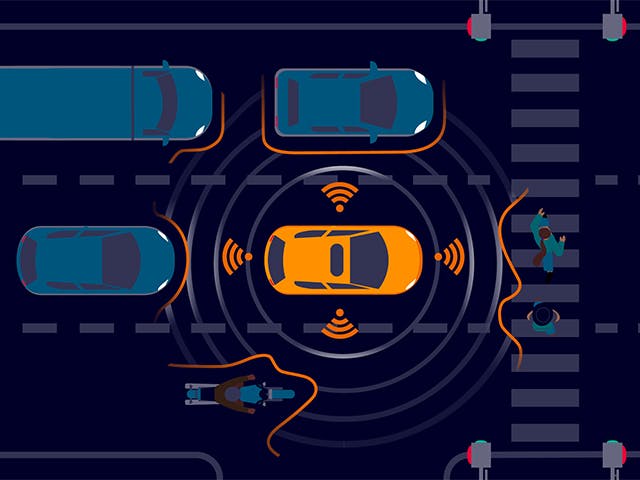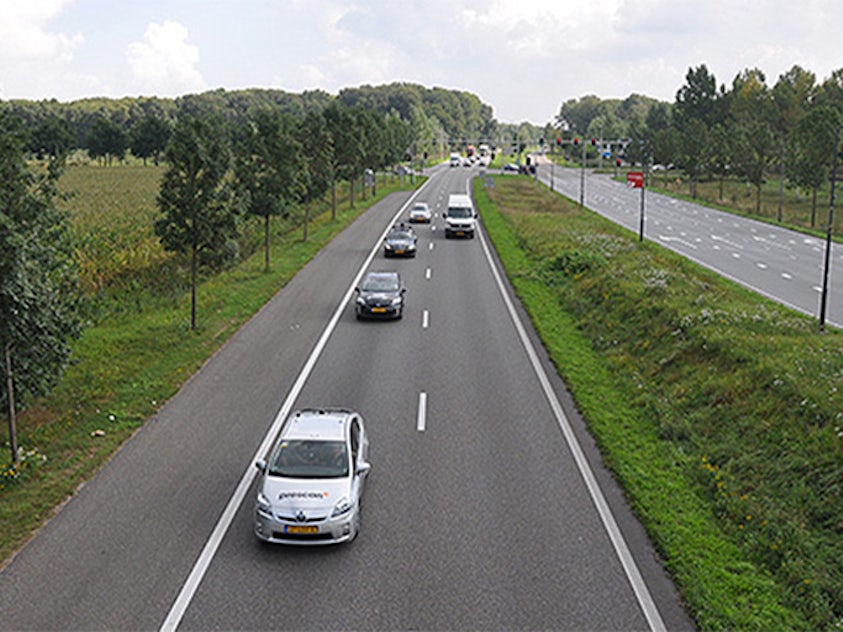Simcenter Prescan permet le développement de la vérification virtuelle pour les systèmes avancés d’aide à la conduite (ADAS) et les véhicules autonomes. À l’aide de nos outils, les ingénieurs suivent une approche de développement systématique avec des retours d’information en boucle et des cycles d’adaptation plus courts, tout en couvrant les scénarios possibles.
Accélérer le développement des systèmes ADAS et autonomes
La validation de la sécurité et de la fiabilité des systèmes avancés d’aide à la conduite (ADAS) et des systèmes de véhicules automatisés peut nécessiter jusqu’à des milliards de kilomètres d’essai, y compris tous les scénarios possibles dans toutes les circonstances possibles. Cela n’est possible que si la majeure partie du travail de validation est effectuée virtuellement, plus rapidement qu’en temps réel, à l’aide de la simulation. Par conséquent, les ingénieurs ont besoin d’une plateforme complète basée sur la physique qui leur permette de suivre une approche systématique.
Tirez facilement parti de la puissance de la simulation
Grâce à Simcenter Prescan, les ingénieurs peuvent valider virtuellement les systèmes ADAS et les systèmes de véhicules autonomes en cinq étapes :
- Tout d’abord, ils peuvent reproduire des scénarios de trafic réels en quelques minutes en utilisant des éléments de la base de données Simcenter Prescan (avec des routes, des composants d’infrastructure, des acteurs, des sources météorologiques et lumineuses) via l’interface graphique ou à l’aide d’une API.
- Ensuite, ils peuvent ajouter des modèles de capteurs. Le logiciel peut se connecter à un ego-véhicule pour tester l’interaction entre le véhicule et son environnement.
- Ensuite, Simcenter Prescan dispose d’une interface permettant aux systèmes de contrôle de concevoir et de vérifier des algorithmes pour le traitement des données, la fusion des capteurs, la prise de décision et le contrôle.
- Avec toutes ces données, les ingénieurs peuvent ensuite exécuter des expériences, qui peuvent être effectuées sur plusieurs systèmes d’exploitation et plateformes.
- Enfin, afin de couvrir l’espace de vérification requis, ils peuvent utiliser notre orchestration pour automatiser la variation intelligente des paramètres pour les routes, les trajectoires, les actions, les profils de vitesse, les conditions d’éclairage, les phénomènes météorologiques, la configuration des capteurs, les algorithmes et plus encore.
Validation et vérification de la simulation de capteurs basée sur la physique
Découvrez comment Simcenter Prescan est une plateforme de simulation de premier plan permettant de tester efficacement les systèmes ADAS et les systèmes de véhicules autonomes.

